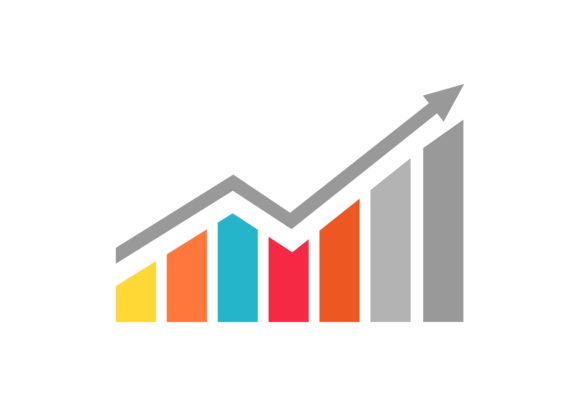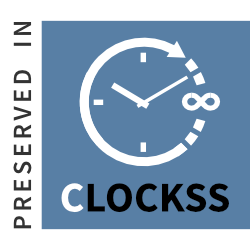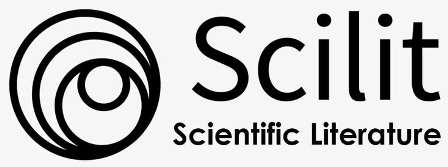The Effect of Hydrogen on Performance of Internal Combustion Engine Fueled by Compressed Natural Gas
DOI:
https://doi.org/10.31272/jeasd.2689Keywords:
Combustion Characteristics, Hydrogen, Lotus Simulation Tools, Natural Gas, PerformanceAbstract
The natural gas can readily serve as the replacement fuel for internal combustion engines. This work tested the SI engine when running on a hydrogen-enriched compressed natural gas (CNG) mixture. The modelling has been implemented at a range of engine speeds from 1000 to 5500 rpm with a full load, direct injection, and a spark-ignited engine with a compression ratio of 10. Engine performance influences were examined, especially regarding brake power, brake thermal efficiency (BTE), and brake specific fuel consumption (BSFC), in addition to the combustion characteristics like cylinder temperature and pressure. A Lotus Engine Simulation program was used for analyzing and modeling. The results demonstrated that the best performance and combustion characteristics were with mixtures that have increased in the H2 percentage. The results show that the brake power and BTE increased, and the BSFC decreased with the increase of hydrogen in the mixture. It was found that the brake power and BTE increased by 2% and 21% for HCNG 25, and the best reduction in BSFC was 6% for HCNG 20 compared to the CNG. It was also observed that maximum cylinder pressure (Pmax) and temperature (Tmax) increase with increasing percentage of H2 in the mixture.
References
C. Satheeshkumar, T. Mohammed Shekoor, “Evaluation of emission characteristics of hydrogen as a boosting fuel in a four-stroke single cylinder gasoline engine,” International Journal of Engineering Research & Technology (IJERT), vol. 3, no. 10, pp. 151-154, Oct. 2014. https://www.ijert.org/evaluation-of-emission-characteristics-of-hydrogen-as-a-boosting-fuel-in-a-four-stroke-single-cylinder-gasoline-engine
R. D. Gandhi, “Use of hydrogen in an internal combustion engine,” International Journal of Engineering and Technical Research (IJETR), vol. 3, no. 2, pp.207-216, Apr. 2015. https://www.erpublication.org/published_paper/IJETR031380.pdf
S. Yousufuddin, S. N. Mehdi, and M. Masood, “Performance and combustion characteristics of a hydrogen− ethanol-fuelled engine,” Energy & Fuels, vol. 22, no. 5, pp.3355-3362, June 2008. https://doi.org/10.1021/ef800309b.
E. Nakova, S. Iliev, and K. Hadjiev, “Impact of Isopropanol Addition on Engine Performance and Emissions,” Engineering Proceeding, the Proceedings of International Conference on Electronics, Engineering Physics and Earth Science (EEPES 2024, vol. 32, pp. 44–44, Aug. 2024, doi: https://doi.org/10.3390/engproc2024070044.
M. I. Khan, T. Yasmin, and A. Shakoor, “Technical overview of compressed natural gas (CNG) as a transportation fuel,” Renewable and Sustainable Energy Reviews, vol. 51, pp.785-797, Nov. 2015. https://doi.org/10.1016/j.rser.2015.06.053
S. Pfoser, O. Schauer, and Y. Costa, “Acceptance of LNG as an alternative fuel: Determinants and policy implications,” Energy Policy, vol. 120, pp. 259–267, Sep. 2018. https://doi.org/10.1016/j.enpol.2018.05.046
Z. Zhang, P. Jia, G. Zhong, J. Liang, and G. Li, “Numerical study of exhaust reforming characteristics on hydrogen production for a marine engine fueled with LNG,” Applied Thermal Engineering, vol. 124, pp. 241–249, Sep. 2017. https://doi.org/10.1016/j.applthermaleng.2017.06.012
R. K. Mehra, H. Duan, R. Juknelevičius, F. Ma, and J. Li, “Progress in hydrogen enriched compressed natural gas (HCNG) internal combustion engines - a comprehensive review,” Renewable and Sustainable Energy Reviews, vol. 80, pp. 1458–1498, Dec. 2017. https://doi.org/10.1016/j.rser.2017.05.061
X. Duan, Y. Liu, J. Liu, M. C. Lai, M. Jansons, G. Guo, S. Zhang, and Q. Tang, “Experimental and numerical investigation of the effects of low-pressure, high-pressure and internal EGR configurations on the performance, combustion, and emission characteristics in a hydrogen-enriched heavy-duty lean-burn natural gas si engine,” Energy Conversion and Management, vol. 195, pp. 1319–1333, Sep. 2019. https://doi.org/10.1016/j.enconman.2019.05.059
K. Nguyen Duc, V. Nguyen Duy, L. Hoang-Dinh, T. Nguyen Viet, and T. Le-Anh, “Performance and emission characteristics of a port fuel injected, spark ignition engine fueled by compressed natural gas,” Sustainable Energy Technologies and Assessments, vol. 31, pp. 383–389, Feb. 2019. https://doi.org/10.1016/j.seta.2018.12.018
J. Lee, C. Park, J. Bae, Y. Kim, S. Lee, and C. Kim, “Comparison between gasoline direct injection and compressed natural gas port fuel injection under maximum load condition,” Energy, vol. 197, p. 117173, Apr. 2020. https://doi.org/10.1016/j.energy.2020.117173
S. Sahoo and D. K. Srivastava, “Effect of compression ratio on engine knock, performance, combustion and emission characteristics of a bi-fuel CNG engine,” Energy, vol. 233, p. 121144, Oct. 2021. https://doi.org/10.1016/j.energy.2021.121144
K. Cheenkachorn, C. Poompipatpong, and C. G. Ho, “Performance and emissions of a heavy-duty diesel engine fuelled with diesel and LNG (liquid natural gas),” Energy, vol. 53, pp. 52–57, May 2013. https://doi.org/10.1016/j.energy.2013.02.027
X. Duan, Y. Liu, M. C. Lai, G. Guo, J. Liu, Z. Chen, and B. Deng, “Effects of natural gas composition and compression ratio on the thermodynamic and combustion characteristics of a heavy-duty lean-burn SI engine fueled with liquefied natural gas,” Fuel, vol. 254, p. 115733, Oct. 2019. https://doi.org/10.1016/j.fuel.2019.115733.
M. Attallah Mashkour and A. Yaseen Ahmed, “Thermodynamic Modeling For Analysing The Performance And Emissions Of Spark-Ignition Engines,” Journal of Engineering and Sustainable Development, vol. 24, no. 2, pp. 57–79, Mar. 2022. https://doi.org/10.31272/jeasd.24.2.5
S. M. V. Sagar and A. K. Agarwal, “Experimental investigation of varying composition of HCNG on performance and combustion characteristics of a SI engine,” International Journal of Hydrogen Energy, vol. 42, no. 18, pp. 13234–13244, May 2017. https://doi.org/10.1016/j.ijhydene.2017.03.063
T. Wongwuttanasatian, S. Jankoom, and K. Velmurugan, “Experimental performance investigation of an electronic fuel injection-SI engine fuelled with HCNG (H2+ CNG) for cleaner transportation,” Sustainable Energy Technologies and Assessments, vol. 49, p. 101733, Feb. 2022. https://doi.org/10.1016/j.seta.2021.101733
A. A. Elshenawy, S. M. Abdel Razik, and M. Gad, “Numerical investigation of performance, combustion, and emission characteristics of spark-ignition engine fuelled with compressed natural gas and hydrogen,” Proceedings of the Institution of Mechanical Engineers, Part E: Journal of Process Mechanical Engineering, p.09544089231208914, Nov. 2023. https://doi.org/10.1177/09544089231208914.
A. S. Fouad K. A. Mohammed S. I. Murtdha and O. S. Ahmed, “Examining the Impact of Diesel Fuel Density Variation on the Performance of Compression Ignition Engines Using the LOTUS Simulation Program,” Kexue Tongbao/Chinese Science Bulletin, vol. 69, no. 01, pp. 923- 936, January, 2024. https://www.kexuetongbao-csb.com/article/examining-the-impact-of-diesel-fuel-density-variation-on-the-performance-of-compression-ignition-engines-using-the-lotus-simulation-program
M. S. Kassim, M. K. Allawi, and H. S. S. Aljibori, “Simulation of Effect of Injection Strategies on Performance of a Spark Ignition Engine,” International Journal on Technical and Physical Problems of Engineering (IJTPE), vol. 15, no. 54, pp. 212-217, March 2023. https://www.researchgate.net/publication/370444672
Downloads
Key Dates
Received
Revised
Accepted
Published Online First
Published
Issue
Section
License
Copyright (c) 2025 Fouad Alwan Saleh, Abdulrahman Shakir Mahmood, Mohammed Kadhim Allawi, Ali Khalid Shaker Al-Sayyab (Author)

This work is licensed under a Creative Commons Attribution 4.0 International License.
















